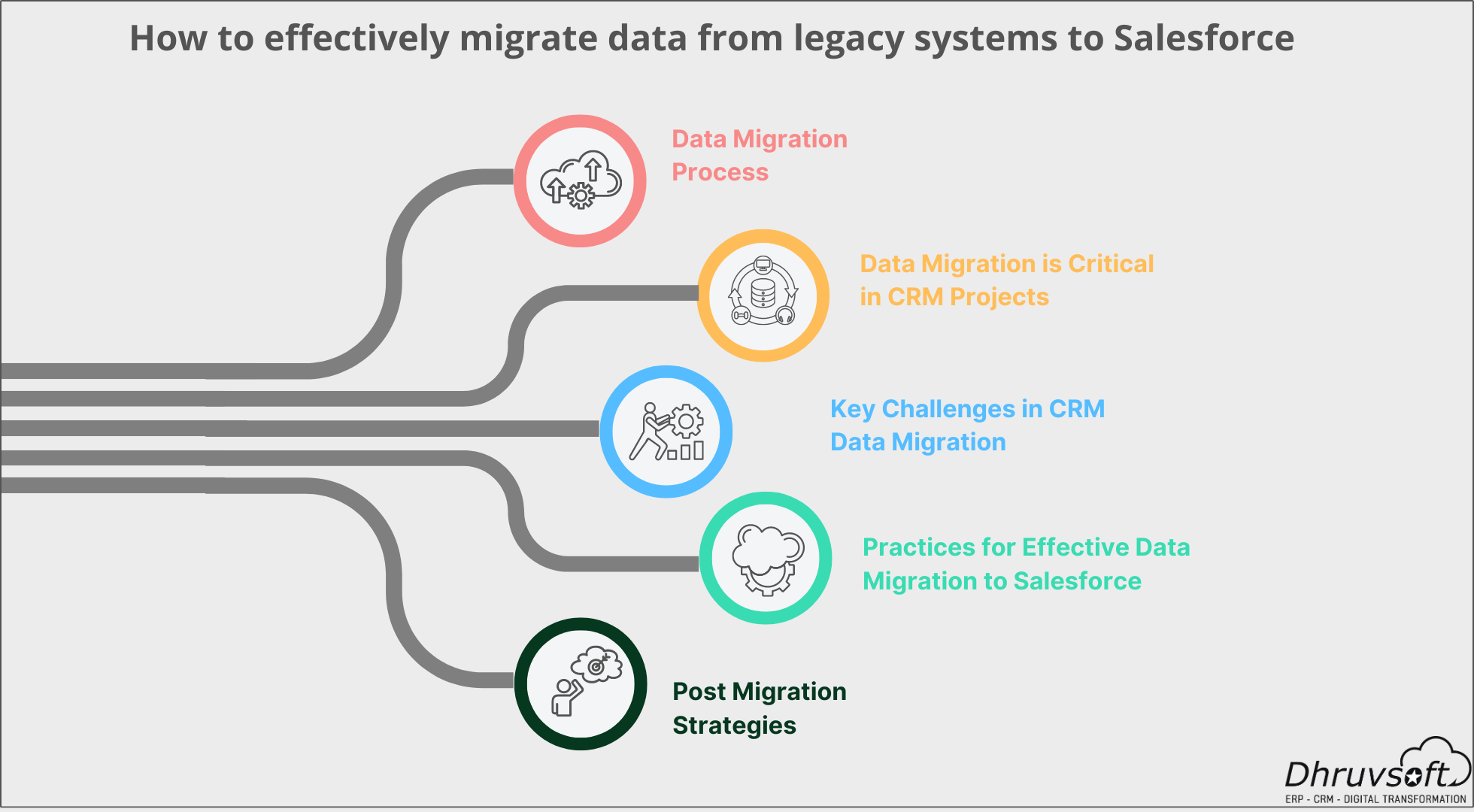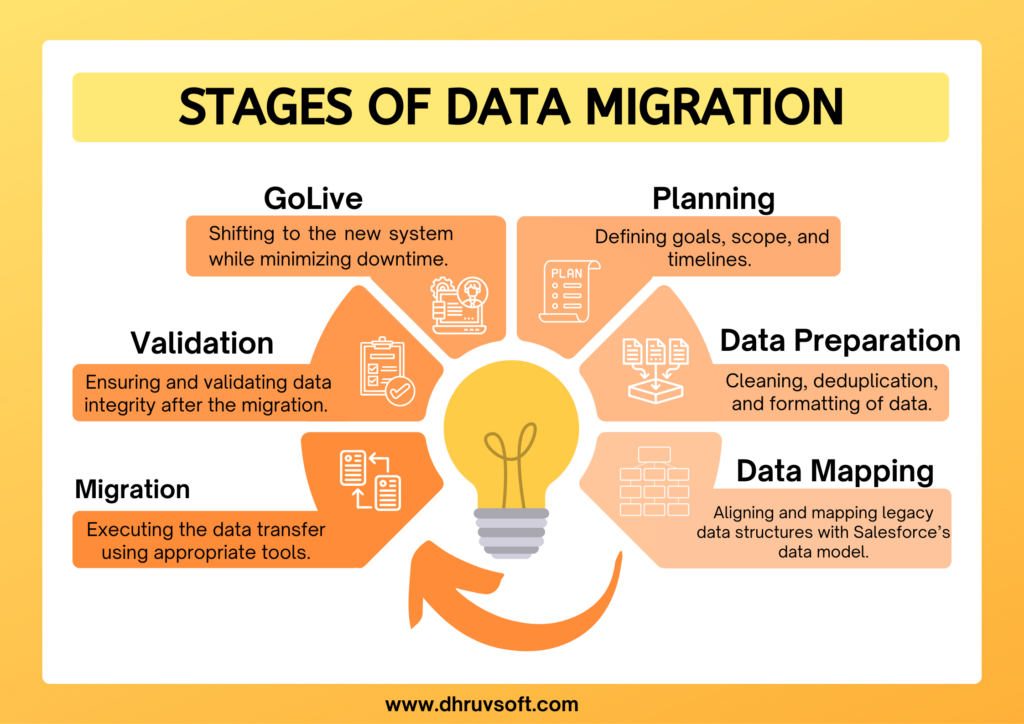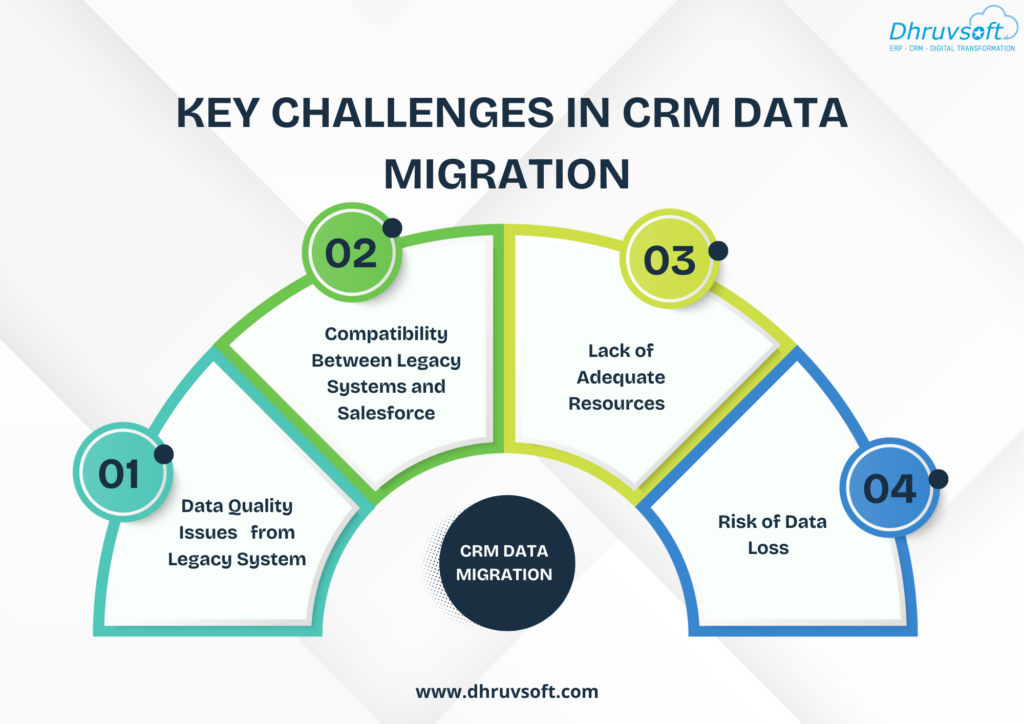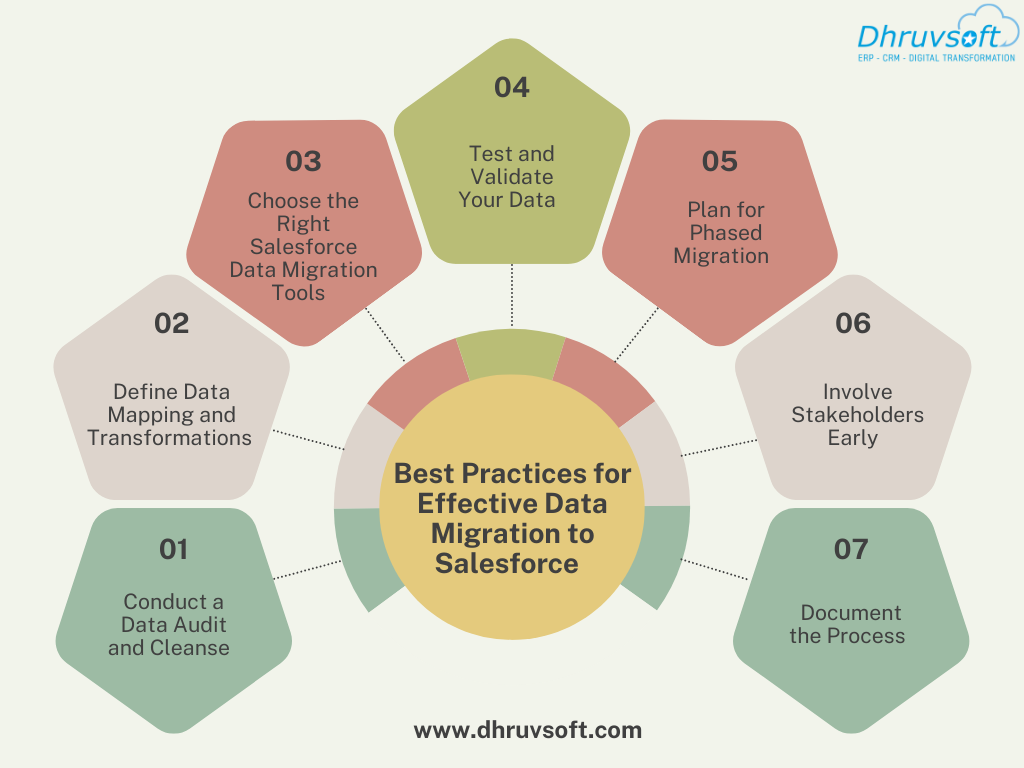Data migration is often one of the most complex and critical components of Customer Relationship Management (CRM) implementation projects, especially when moving data from legacy systems. A poorly executed migration can lead to data loss, overlapping, and inaccurate reporting. On the other hand, a well-planned migration ensures that your business has access to accurate and clean data from day one.
In this blog post, we’ll explore the essential tips and best practices for effectively migrating data from legacy systems to a CRM (in this article we are focusing on Salesforce.com CRM) without losing critical information. We’ll cover key steps to follow, challenges to anticipate, and strategies to minimize risks throughout the data migration process.

Data migration is often one of the most complex and critical components of Customer Relationship Management (CRM) implementation projects, especially when moving data from legacy systems. A poorly executed migration can lead to data loss, overlapping, and inaccurate reporting. On the other hand, a well-planned migration ensures that your business has access to accurate and clean data from day one.
In this blog post, we’ll explore the essential tips and best practices for effectively migrating data from legacy systems to a CRM (in this article we are focusing on Salesforce.com CRM) without losing critical information. We’ll cover key steps to follow, challenges to anticipate, and strategies to minimize risks throughout the data migration process.
1. Introducing the Data Migration Process
Before you begin the migration process, it’s crucial to understand that data migration is not just about transferring data. It’s about ensuring that data from legacy systems, often structured differently or outdated, fits seamlessly into the modern CRM system like Salesforce. This requires not only technical know-how but also a solid migration strategy.
Stages of Data Migration
The data migration process generally comprises these stages:
- Planning: Defining goals, scope, and timelines.
- Data Preparation: Cleaning, deduplication, and formatting of data.
- Data Mapping: Aligning and mapping legacy data structures with Salesforce’s data model.
- Migration: Executing the data transfer using appropriate tools.
- Validation: Ensuring and validating data integrity after the migration.
- GoLive: Shifting to the new system while minimizing downtime.
Each stage comes with its own set of challenges and risks, making careful planning essential.
2. Why Data Migration is Critical in CRM Projects
Preserving Business Continuity
Migrating clean, accurate data ensures that your business continues to function smoothly during and after the switch to Salesforce CRM. Whether it’s customer interactions, historical data, or financial records, having these intact allows for business continuity.
Ensuring Data Integrity
Data integrity is crucial in CRM systems, where decisions are based on customer data. Incorrect or incomplete data can lead to flawed decision-making, resulting in poor customer experiences or lost revenue.
Compliance and Security
Most businesses handle sensitive information and have to comply with global standards. Considering this data security and compliance are critical during migration. Proper data handling practices ensure that customer data is protected during the transfer.
3. Key Challenges in CRM Data Migration
1. Data Quality Issues from Legacy System
Legacy systems often contain outdated, duplicate, or incorrect data. Migrating this “dirty” data to Salesforce CRM can cause more problems than it solves. It’s essential to clean your data before starting the migration process.
2. Compatibility Between Legacy Systems and Salesforce
Legacy systems may use different data structures, formats, or standards when compared with Salesforce CRM. Misalignments between these systems and Salesforce can lead to lost or improperly mapped data.
3. Lack of Adequate Resources
Data migration requires both technical expertise and business knowledge. A lack of adequate resources—either in terms of manpower or tools—can severely delay the migration process and impact its success.
4. Risk of Data Loss
The complexity of data transfer increases the risk of losing critical information during the migration process. Ensuring that all necessary data is correctly mapped and transferred is essential to prevent any operational issues post-migration.
4. Best Practices for Effective Data Migration to Salesforce
1. Conduct a Data Audit and Cleanse
A comprehensive data audit of the legacy system is the first step toward successful data migration. Analyze your legacy data for any inconsistencies, duplicates, or errors. Remove or correct inaccurate data to ensure a clean transfer to Salesforce. Tools such as OpenRefine or Talend can be useful for this process.
Data Cleansing Tips:
- Remove redundant and outdated records.
- Correct inaccuracies such as spelling errors, wrong contact details, or incorrect customer profiles.
- Ensure uniformity in naming conventions.
2. Define Data Mapping and Transformations
Data mapping involves aligning your legacy system’s data fields and structure with that of Salesforce’s data model. Since legacy systems may store data differently than Salesforce, you may need to transform or restructure data before migrating it.
Use tools like Salesforce Data Loader, Mulesoft Dataloader.io or Talend Data Integration for data mapping & testing to streamline this process. Be sure to document your mappings to prevent confusion during the actual migration.
One of the key suggestions while mapping the data is to maintain a source reference in Salesforce to track and validate the data after it is uploaded.
3. Choose the Right Salesforce Data Migration Tools
The tools you select for migration can significantly impact the speed and success of your data transfer. Here are some popular tools for Salesforce.com CRM data migration:
- Salesforce Data Loader: This is a free tool provided by Salesforce and is ideal for large volumes of data.
- Informatica Cloud Data Wizard: User-friendly and integrates well with Salesforce.
- Talend: Provides robust ETL (Extract, Transform, Load) capabilities.
- MuleSoft: Known for its integration capabilities with both Salesforce and legacy systems. It has tool called Dataloader.io which is worth considering.
Choosing the right tool depends on factors such as the volume of data, complexity, and the structure of your legacy system. In most cases, we have found Salesforce Data Loader and Dataloader.io to be useful.
4. Test and Validate Your Data
Before going live, conduct multiple test migrations to identify any potential issues. This step is vital for spotting errors such as missing fields or incorrect mappings that could affect data integrity.
It is always advisable to test the data upload (if possible) by uploading in a Full Copy Sandbox of Salesforce. If not, then a sample set of data can be uploaded in the partial copy Sandbox.
Tips for Data Validation:
- Verify that all critical data has been migrated.
- Test data consistency across different Salesforce objects.
- Involve end users to ensure that the migrated data meets business needs.
5. Plan for Phased Migration
Rather than migrating everything in one go, consider a phased approach. Start by migrating less critical data, followed by important customer and transaction data. This reduces the risk of overwhelming your system or team and gives you a chance to address any unforeseen challenges.
Also, the sequence of data upload will depend on the data structure. The data that is used as a lookup in other modules has to be migrated first.
6. Involve Stakeholders Early
Your data migration team should involve IT experts, business leaders, and end users to ensure the migration aligns with business goals.
These stakeholders should define data requirements, identify critical data sets, and help validate the migrated data.
7. Document the Process
Proper documentation of each phase of the migration process helps in future troubleshooting and ensures that your team can easily reference key decisions, data mappings, and tool usage.
This also provides transparency to the entire organization, ensuring alignment and confidence in the migration process.
5. Post Migration Strategies
1. Conduct Data Reconciliation
Once your data has been successfully migrated, it’s time for a thorough reconciliation process. Compare your legacy system data with the migrated Salesforce data to identify any discrepancies. This ensures that no critical information is lost or misrepresented during migration.
2. Train Users
Your team needs to know how to access and use the newly migrated data within Salesforce. Conduct thorough training sessions to help users navigate the system and understand where critical data is stored.
3. Monitor System Performance
Monitor your Salesforce environment to ensure that the system is running smoothly after the migration. Keep an eye on data accuracy, load times, and any errors that users might report.
Conclusion
Migrating data from legacy systems to Salesforce can be a daunting task, but with careful planning, the right tools, and a phased approach, it can be managed effectively without data loss or corruption. By auditing and cleansing your data, mapping it properly, and involving key stakeholders, you can ensure that your migration process is smooth and successful.
Don’t rush the process—take the time to test, validate, and reconcile your data. With a focus on maintaining data integrity and minimizing troubles, your business will be able to hit the ground running once your Salesforce CRM is live.
Dhruvsoft can help with your data migration process; contact us for a free discovery call with our specialists, who can guide you through each step and ensure a smooth transition to Salesforce.
By following these tips and best practices, your Salesforce data migration will be set up for success, ensuring you maintain critical information while maximizing the value of your new CRM system.



